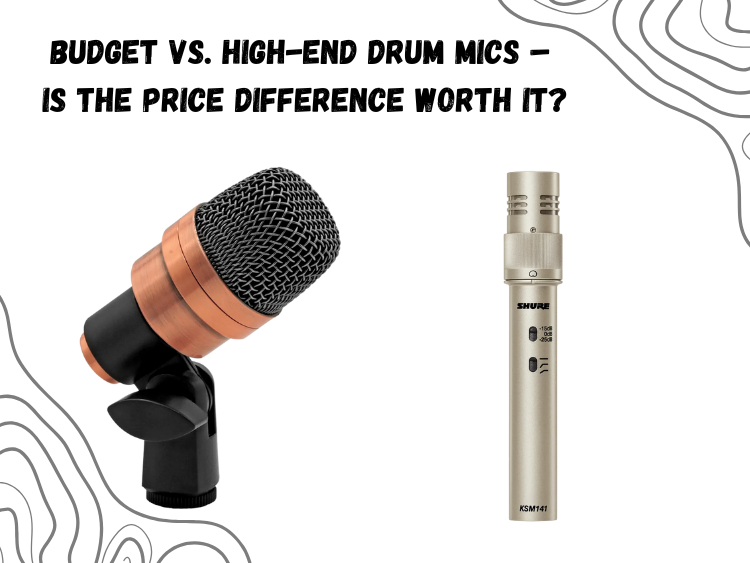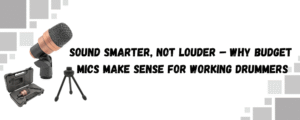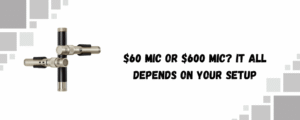Walk into any drum studio or scroll through mic forums and you’ll hear the same argument on repeat—do expensive drum mics really sound better, or are you just paying for a fancy name?
There’s no shortage of options. You can get a full mic kit for the price of one premium snare mic. But here’s the thing—price doesn’t always equal performance, especially if you’re recording in a less-than-perfect room or just want something that works without a fuss.
So, let’s put it under the microscope: cheap vs expensive drum mics—which gives you the better value?
What You Actually Get for the Money
Start with the basics—build, sound, and usability.
The 5 Core Snare Microphone clocks in at a fraction of the price of a boutique mic. But it’s not just about affordability—it does the job. You get a unidirectional pickup pattern, clean transient capture, and solid SPL handling, which means you can crank your snare or toms without distortion creeping in.
Compare that to something like the Shure KSM141, a well-known high-end mic used in pro studios. It offers multi-pattern flexibility, incredibly detailed capture, and a flat frequency response that doesn’t color the tone. It’s brilliant on overheads, snares, even room mics. But for that detail, you’re paying a serious premium—more than 5x the cost of a single budget dynamic mic.
So what’s the gap really buying you? A bit more nuance, a cleaner top-end, and more versatility—but only if your setup can take advantage of it.
Where Cheap Mics Win
If you’re close-miking in a home studio or gigging at bars and rehearsal rooms, spending $500 on a single mic is often overkill.
Why? Because the biggest limitations in your sound probably aren’t your microphones—they’re the room, the drums, or the mix. In that context, a solid dynamic like the 5 Core Snare Mic will give you 80% of the tone at 20% of the cost.
You won’t get the same airiness on overheads, or the same precision when isolating subtle ghost notes—but you will get something very usable. No hiss. No paper-thin high end. Just a straightforward signal you can shape in the mix.
And when you’re recording a full kit, that math starts to matter. Seven budget mics for the price of one high-end snare mic? That gives you flexibility, backups, and consistency across the board.
Where High-End Mics Make a Difference
Now, if you’re working in a treated room, tracking for release, or chasing a polished “record-ready” drum sound out of the box—then yes, premium mics start to make sense.
A mic like the Shure KSM141 gives you transparency and control. You’ll hear more of the stick on the head, more air in the cymbals, and subtle room reflections that low-cost mics often smear or miss entirely.
But even then, that edge isn’t universal. On toms, close-miked snares, or aggressive genres like punk or metal, that added detail isn’t always what you want. You might prefer the grit and compression of a cheaper mic that naturally softens the tone.
The Value Test: What’s Best for Your Setup?
This isn’t about “which mic is better.” It’s about what’s better for you.
- If you need durability, ease, and decent tone: The 5 Core snare mic gets the job done. You won’t stress about handling it wrong or dropping it mid-session. It’s rugged, consistent, and easy to work with. No weird quirks. No learning curve.
- If you’re investing in critical listening and long-term mixing: A high-end mic like the KSM141 offers serious sonic accuracy. It captures more and processes better—but only if everything else in your chain is up to the same level.
And that’s the catch most people ignore. A $600 mic through a $60 interface isn’t a great setup. But a budget mic through a solid preamp and good positioning? That’s a setup you can trust.
Final Word
You don’t need to spend big to sound good. Not anymore.
Gear like the 5 Core Snare Microphone proves that budget mics aren’t just for practice—they’re for real work. Meanwhile, high-end gear like the KSM141 has its place—but it’s not always the best value.
Figure out what you need, not just what looks good in a gear list.
That’s where the real value is.




